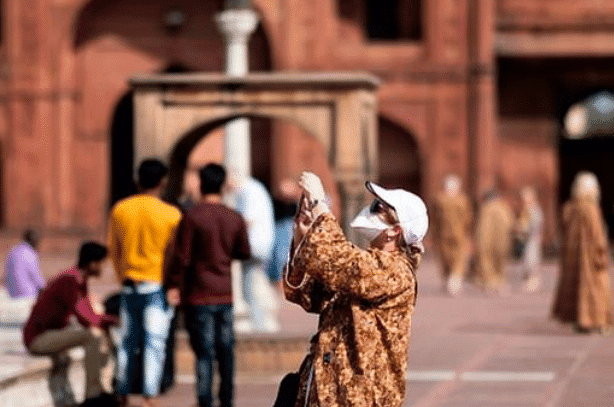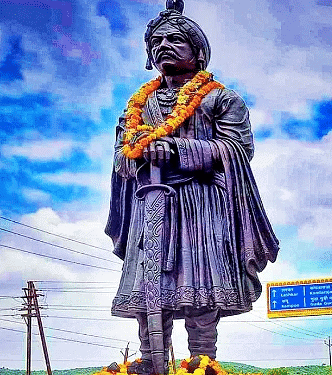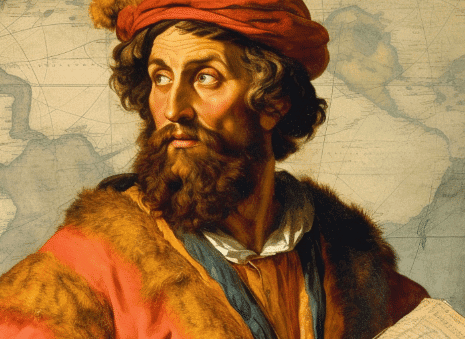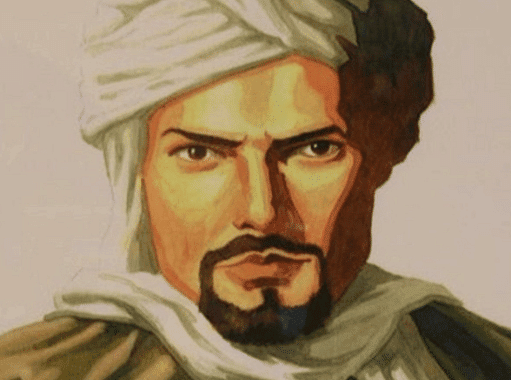UPSC Exam > UPSC Notes > History for UPSC CSE > Nitin Singhania Summary: India through the Eyes of Foreign Travellers
Nitin Singhania Summary: India through the Eyes of Foreign Travellers | History for UPSC CSE PDF Download
Introduction
Throughout history, India has captivated rulers and travelers from around the world, drawn by its abundant opportunities and intrigued by its diverse cultures, religions, and traditions. Many visitors to India documented their experiences, focusing on various aspects such as court affairs, architecture, monuments, and societal dynamics, providing valuable insights into Indian civilization. Remarkably, while numerous prominent travelers visited India during ancient and medieval times, there is a noticeable absence of major accounts by female travelers.
 Foreign Travelers
Foreign Travelers
Brief Description of some of the most important travelers:Megasthenes | Indica
- Ancient Greek historian, diplomat, and explorer in the Hellenistic period.
- Visited India between 302 and 288 BC as an ambassador of Greek general Seleucus I Nicator.
- Described India in his book Indica; Original Copy Lost, fragments collected by E. A. Schwanbeck, reconstructed by John Watson McCrindle in 1887.
- Descriptions include India as a quadrilateral-shaped country bounded by the ocean, details of soils, rivers, plants, animals, administration, and social and religious life.
- Mentioned worship of Lord Krishna, seven castes in India, and aspects of the Indian caste system.
- Claimed absence of slavery and famine in India, influenced by Herodotus' classification of Egyptian society.
- Criticized for uncritical acceptance of Indian folklore and idealizing Indian culture from a Greek philosophical standpoint.
 John Watson McCrindle
John Watson McCrindle
Deimachus
- Ambassador to Bindusara or Amitraghata, son and successor of Chandragupta Maurya, sent by Antiochus I.
Heliodorus (Khamba Baba)
- Indo-Greek ambassador sent by Antialcidas to the court of Bhagabhadra, 5th ruler of the Shunga dynasty, around 113 BC.
- Erected a pillar at Vidisha, Madhya Pradesh, known as the 'Khamba Baba' or 'Heliodorus Pillar' in honor of the Hindu god Vasudeva (Vishnu).
- Adopted Hinduism (Vaishnava) and styled himself as 'Bhagavata'.
- Inscriptions at the pillar site are known as Besnagar inscriptions.
 Shunga dynasty
Shunga dynasty
Fa-Hien(Record of Buddhist Kingdoms)
- Chinese pilgrim who visited India during the Gupta period around 400 AD, during Chandragupta II's reign.
- Visited various Buddhist monasteries and compiled a 'Record of Buddhist Kingdoms'.
- Details the religious and social life of Indians at that time.
- Mentions Buddhism and Hinduism as popular religions, with Buddhism more prominent in Punjab, Bengal, and the region around Mathura.
- Studied Sanskrit Language in Pataliputra.
- Described internal and foreign trade of India, trade relations with China, countries of Southeast Asia, Western Asia, and Europe.
Hiuen Tsang | SI-YU-KI
- Chinese traveler, Buddhist scholar, monk, and translator.
- Visited India between 629 and 644 AD during Harshavardhana's reign.
- Known as Xuanzang and the Prince of Pilgrims.
- Detailed administrative, political, religious, economic, and social conditions in India in his book Si-Yu-Ki: Buddhist Record of the Western World.
- Descriptions are biased to glorify Buddhism and praise King Harshavardhana.
- Described city life in India, highlighting Kannauj, Prayag, Patal, Sravasti, Kapilavastu, Nalanda, and Vallabhi.
 Hiuen Tsang
Hiuen Tsang - Harsha's division of the state's income and the safety of traveling during that time were discussed.
- Praised Harsha as a laborious and welfare-focused leader.
- Traveled extensively across India, including Kashmir, Punjab, Kapilavastu, Bodh Gaya, Kushinagar, Deccan, Odisha, and Bengal.
- Studied under Acharya Shilabhadra at the University of Nalanda.
- The journey is recorded in detail in the classic Chinese text Great Tang Records on the Western Regions.
I-tsing | A Record of the Buddhist Religion
- Chinese Buddhist monk who stayed in India from 695 AD to study at Nalanda Mahavihara.
- Explained Buddhist schools in Northern India and South Seas islands.
- Recorded traditional schools: Mahasamghika, Sthavira, Mulasarvastivada, and Sammitiya Nikayas.
- Translated many Pali and Sanskrit Buddhist texts into Chinese.
- Notable translations include the Mulasarvastivada Vinaya, Golden Light Sutra, Diamond Sutra, and Avadanas.
Sulaiman al-Tqjir
- 9th-century Persian Muslim merchant, traveler, and writer.
- Traveled to India during the Pala Empire's reign, and referred to the kingdom as Ruhmi.
- Identified Mihira Bhoja as one of the greatest Gurjar emperors.
 Mihira Bhoja
Mihira Bhoja
Al-Masudi | Muruj-Ul-Zehab
- 10th-century Arab historian, geographer, and explorer.
- Known as the 'Herodotus of the Arabs.'
- Combined world history, scientific geography, social commentary, and biography.
- Wrote Meadows of Gold and Mines of Gems.
- A famous manuscript titled Muruj-ul-Zehab was written in 956 AD.
AL-Biruni | Kitab-Ul-Hind
- Scholar born in Khwarazm, Uzbekistan.
- Invaded by Sultan Mahmud, developed an interest in India.
- Spent time in Punjab and Northern parts of India, learned Sanskrit, and translated Sanskrit works.
- Wrote Kitab-ul-Hind covering a wide range of subjects.
- Faced language, religious beliefs, and insularity barriers in understanding Indian culture.
- Viewed the caste system differently, influenced by normative Sanskrit texts.
 Marco Polo
Marco Polo
Marco Polo | The Book of Sir Marco Polo
- Italian merchant, adventurer, and writer.
- Traveled to India in 1271 AD, visited Kakatiya kingdom.
- The Book of Sir Marco Polo inspired Christopher Columbus.
- Detailed chronicle of commercial, religious, and social conditions in the Eastern world.
Ibn Battuta | Rihla
- Moroccan traveler, born in Tangier.
- Traveled extensively across Syria, Iraq, Persia, Yemen, Oman, and East Africa.
- Came to India in 1332-33 AD, appointed as 'Qazi' by Muhammad bin Tughlaq.
- Sent to China as the Sultan's envoy in 1342.
- Rihla provides vivid details about the social and cultural life of India during the Delhi Sultanate period.
- Fascinated by paan and coconut, wrote descriptively about them.
- Efficient postal system described, including Horse Post and Foot Post.
 Ibn Battuta | Rihla
Ibn Battuta | Rihla
Shihabuddin al-Umari | Masalik albsar fi-mamalik al-amsar
- Ambassador from Damascus, vividly described India in his book on Mamluk administration.
Niccolo de' Conti
- Italian merchant and explorer.
- Crossed the Arabian Sea to Gujarat in 1420-21 AD.
- Traveled to Pacamuria, Helly, and the Vijayanagara kingdom.
- Found the tomb of St. Thomas in Mylapore, confirming the presence of the Christian community.
- Described South-East Asia as surpassing all other regions in wealth, culture, and magnificence.
 Arabian Sea
Arabian Sea
Abdur Razzaq | Matla-Us-Sadain-Wa-Majma-Ul-Bahrain
- Persian, Timurid chronicler, and scholar.
- Visited the Vijayanagara kingdom during Deva Raya II's reign.
- Ambassador of Shah Rukh, the Timurid dynasty ruler of Persia, to the court of King Zamorin of Calicut in 1442.
- Detailed the mission to India in a 45-page narrative in his book Matla-us-Sadain-wa-Majma-ul-Bahrain.
Afanasy Nikitin | The Journey Beyond Three Seas
- Russian merchant from Tver.
- One of the first Europeans to visit India after Niccolo de’ Conti.
- Describe the Indian population, social system, economy, military, religion, lifestyles, government, and natural resources.
- Detailed the condition of the Bahmani kingdom under Muhammad I (1463-82).
 Afanasy Nikitin
Afanasy Nikitin
Duarte Barbosa | Book of Duarte Barbosa
- Portuguese voyager who stayed in India for 16 years (1500-1516).
- Spent most of his time in Kerala and the Vijayanagara kingdom.
- Studied Malayalam and wrote about caste culture and social life in India.
Domingo Paes | Chronica Dos Reis De Bisnaga
- Portuguese merchant, writer, and explorer.
- Visited India between 1520 and 1522 AD.
- Provided detailed information about the Vijayanagara Empire, especially during the reign of King Krishnadevaraya.
Ceasar Frederick
- Also known as Ceasar Frederick.
- Visited the Vijayanagara Empire in 1567, two years after its ruin.
- Described the ruins of Vijayanagara as still standing but inhabited only by wild animals.
 Achyutdeva Raya
Achyutdeva Raya
Fernao Nuniz | Chronica Dos Reis De Bisnaga
- Portuguese merchant who visited during Achyutdeva Raya's reign.
- Noticed women in the kingdom who were astrologers, soothsayers, wrestlers, and accountants.
- Co-authored Chronica dos reis de Bisnaga with Domingo Paes.
Jan Huyghen van Linschoten | Itinerario
- 16th-century Dutch traveler.
- Provided valuable accounts of social and economic life in South India, mainly Goa.
- Included detailed maps of voyages to the East Indies, particularly India.
William Hawkins
- Representative of the English East India Company and ambassador of King James I.
- Arrived in India in 1608 and negotiated with Mughal Emperor Jahangir for a factory at Surat.
- Permission granted by Jahangir marked the recognition of English commerce in the East.
Antonio Monserrate | The Commentary of Father Monserrate: S. J., on His Journey to the Court of Akbar
- Spanish explorer who traveled to India in the 16th century.
- Arrived in Goa in 1578 and journeyed to cities like Agra, Fatehpur Sikri, and Lahore.
- Describe Akbar's administration, religious policies, and cultural practices.
 Antonio Monserrate
Antonio Monserrate
Sir Thomas Roe
- English diplomat during Queen Elizabeth I's reign.
- Stayed at the court of Mughal Emperor Jahangir from 1615 to 1619.
- Journal of the Mission to the Mughal Empire is a valuable contribution to the history of India.
Peter Mundy
- 17th-century British merchant trader, traveler, and writer.
- Traveled to India, China, and Japan.
- Described Banjara community and their importance in trade during the Delhi Sultanate and Mughal times.
Jean-Baptiste Tavernier
- 17th-century French gem merchant and traveler.
- Made six voyages to Persia and India.
- Described Varanasi's structures and visited the court of Shah Jahan and diamond mines.
 Shah-Jahan
Shah-Jahan
Niccolao Manucci | Storia do Mogor
- Italian writer, doctor, and traveler.
- Arrived in India in 1653 and spent his life there.
- Described the reign of Mughal emperors Shah Jahan and Aurangzeb in Storia do Mogor.
Francois Bernier | Travels in the Mughal Empire
- Frenchman, doctor, and historian.
- Criticized the Mughal Empire and compared it with contemporary Europe.
- Wrote about social and economic aspects of Mughal India, including artisans, cities, and merchants.
Jean-Antoine Dubois | Hindu Manners, Customs and Ceremonies
- French Catholic missionary known as Dodda Swami.
- Adopted the Hindu way of life, clothing, food, and language.
- The book contains insights into Indian society, caste system, religious practices, and women's freedom.
The document Nitin Singhania Summary: India through the Eyes of Foreign Travellers | History for UPSC CSE is a part of the UPSC Course History for UPSC CSE.
All you need of UPSC at this link: UPSC
|
216 videos|852 docs|219 tests
|
FAQs on Nitin Singhania Summary: India through the Eyes of Foreign Travellers - History for UPSC CSE
| 1. What is the book "India Through Eyes of Foreign Travelers" by Nitin Singhania about? |  |
Ans. "India Through Eyes of Foreign Travelers" is a book by Nitin Singhania that provides insights into India's rich cultural heritage and diverse landscapes through the perspectives of foreign travelers. The book explores their experiences, observations, and reflections on various aspects of Indian society, history, art, and architecture.
| 2. Who is the author of the book "India Through Eyes of Foreign Travelers"? |  |
Ans. The author of the book "India Through Eyes of Foreign Travelers" is Nitin Singhania. He is known for his expertise in Indian culture, art, and heritage and has authored several books on the subject.
| 3. How does the book "India Through Eyes of Foreign Travelers" contribute to the understanding of Indian culture and history? |  |
Ans. The book "India Through Eyes of Foreign Travelers" provides a unique perspective on Indian culture and history by presenting the views and experiences of foreign travelers. It offers diverse narratives and accounts that shed light on different aspects of Indian society, traditions, and historical events. This contributes to a more comprehensive understanding of India's rich cultural heritage.
| 4. Is the book "India Through Eyes of Foreign Travelers" relevant for the UPSC exam? |  |
Ans. Yes, the book "India Through Eyes of Foreign Travelers" by Nitin Singhania is relevant for the UPSC exam. The UPSC exam covers various topics, including Indian culture, history, and art. This book can provide valuable insights and additional information for candidates preparing for the exam.
| 5. Where can the book "India Through Eyes of Foreign Travelers" be purchased? |  |
Ans. The book "India Through Eyes of Foreign Travelers" by Nitin Singhania can be purchased from various online platforms such as Amazon, Flipkart, and major bookstores. It is widely available in both physical and e-book formats.
Related Searches





















